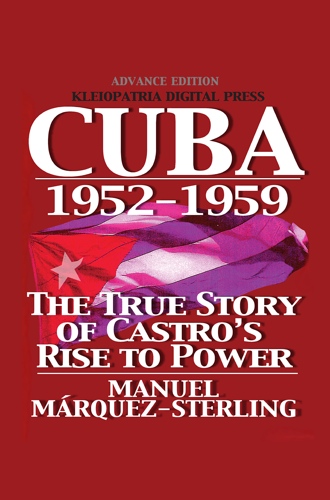March 11, 1958
In March Batista faced judiciary affronts. As part of Castro’s subversive campaign, M-26-7 had been endeavoring to enlist judges to make pronouncements from the bench against the regime. These efforts targeted judges who were anti-Batista and inclined to judicial activism, such as Enrique Hart Ramirez, father of two sons actively involved in Castro terrorist activities (Armando Hart Dávalos, then in jail, and Enrique Hart Dávalos, the M-26-7 Chief of Terrorist Operations [Jefe de Acción y Sabotaje] for Matanzas province–who died a month later when a bomb he was making exploded). Armando Hart came out of the Communist closet in 1959 to join Castro’s first Council of Ministers, and subsequently held several high ranking positions including Politburo and Communist Party leadership posts.
A group of judges made public a March 6 letter criticizing the state of Cuban justice which accused the Batista government of at once of interfering with judges carrying out their duties (particularly in unresponsiveness to habeas corpus), and failing to prevent or capture the rebel terrorists planting bombs and perpetrating other violence in courtrooms and against judges. Enrique Hart Ramirez was one of the signers.
Alabau was a tragic figure, sorely wanting in judicial temperament. Castro rewarded him with an appointment to the Supreme Court of his revolutionary government in 1959, but he soon fell out of favor and had to flee into exile. There he attempted to foist an extraordinary hoax, claiming he had led military forces of the "Unitary Invasion Movement" that landed in Cuba and fought a battle against Castro forces in Guayabal (Camagüey province) that had inflicted dozens of casualties on Castro’s armed forces. It was soon apparent that there was no truth to his fantastic claims and that the photographs Alabau provided as evidence were fraudulent.
It is ironic, in considering the judges’ letter highlighting grievance over habeas corpus responsiveness, that one of Castro’s first acts on establishing his revolutionary government in January 1959 was to abolish
With hindsight, we see the judiciary affronts to Batista reveal that in pre-Castro Cuba there was an independent judicial branch, whose members represented a diversity of political opinion including Batista opponents—even some who succumbed to judicial activism and overt political public statements and actions. And that in those days there was a free press to report such events. Within two years of Castro’s rise to power and the revolutionary change his advocates urged, an independent judiciary, diversity of political views and a free press were but a memory of Cuba’s republican past.
 |  |
| Enrique Hart Dávalos | (second from right) Col. Esteban Ventura Novo 1958 (photo: Joseph Scherschel/LIFE) |
based on Manuel Márquez-Sterling's Cuba 1952-1959 and
Cuba 1952-1959 Interactive Timeline
Cuba 1952-1959 Interactive Timeline


 Mobile subscription
Mobile subscription



No comments:
Post a Comment